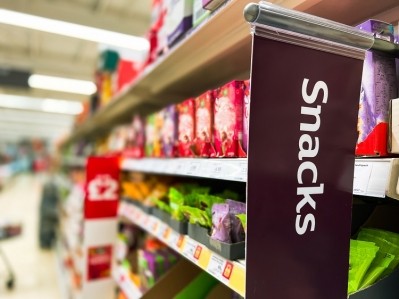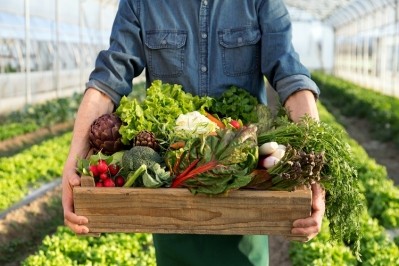Old school favourites are making a comeback

“It’s not like it was in the good old days…”
We’ve all heard those words from older relatives, and there’s every chance we’ll utter those words at some point in our lives. Why? People love nostalgia. Are we all guilty of romanticising the past? Probably. But it’s hardly a crime so we’ll keep on doing it.
Whether it’s the numerous Instagram accounts showing the toys, adverts, and gadgets of the past, or podcasts dedicated to the football of yesteryear (check out Quickly Kevin if you haven’t already!) Nostalgia sells.
Enter the nostalgia food trend.
“Everything old, is new,” says a spokesperson for industry analyst firm, thefoodpeople. “Retro dishes from the 50s through to the 80s are back in vogue – from appetisers (prawn cocktails, gilda skewers, etc.) to mains (poached fish in butter sauce, meatloaf, etc.) to desserts (trifle, roulades, etc.).”
So why are consumers embracing the flavours of the past?
"With so many varieties and developing flavours now on offer, consumers are always on the lookout for a touch of tradition,” Arainn Cleland, sales director of Yorkshire Baking Company, told FoodNavigator. “Whether these are family favourites, or flavours and products that spark nostalgia and have a ‘classic’ element to them.”

But it’s not just the joy of reminiscing that's fuelling the current nostalgia trend. Many believe that recent global unrest and political uncertainty has led to a consumer desire for simpler times.
“In light of global crises, such as the pandemic, followed by inflation, consumers are leaning on nostalgic brands to remind them of good times, and for reassurance regarding quality and taste," says a spokesperson for market insight firm Mintel. "The nostalgia focus on the 'before years' – before the COVID-19 pandemic – stems from a retrospective perception of this period as a better time for many."
And this view is echoed by food manufacturers.
“We've lived through turbulent times recently,” Rachel Kettlewell, founder of low-sugar jam brand, Fearne & Rosie, told FoodNavigator. “Consumers are looking for simple, clean, traditional flavours that fulfil a feeling of nostalgia.”
And as well as looking back to simpler times globally, many consumers also associate the past with healthier foods, free from additives and preservatives.
“Consumers are becoming increasingly aware of what is in the foods they are eating and the impact it has on their bodies and our planet,” adds Fearne & Rosie’s Kettlewell. “We know consumers value honesty and integrity of ingredients. Simple, clean ingredients with a nod to tradition and that feeling of nostalgia will always be celebrated.”
And the nostalgia trend doesn’t stop there.

Marketing teams join the nostalgia food trend
The nostalgia food trend is sweeping the food industry, and it appears that everyone’s keen to get involved. Not only is the manufacturing side of the food industry embracing old-school style, the branding teams are happy to throwback too.
As part of its 200th anniversary celebrations, British confectionery brand, Cadbury, now owned by Mondelez International, has brought back some of its classic Dairy Milk packaging.
Cadbury’s is also relaunching its Top Deck bar for a limited time, with packaging said to be ‘vintage inspired’ to appeal to the nostalgia of Generation X.
And this trend isn't only being seen across Europe, brands in the US are also appealing to the nostalgic consumer, with big names like Kellogg's taking a trip down memory lane. The cereal giant has launched limited edition Pop-Tarts in the original 1960s packaging.

However, one brand famously bucking this trend is Lyle's Golden Syrup, which recently rebranded after 150 years. The famous lion surrounded by bees, which previously adorned Lyle’s tins, has been replaced by a lion’s head after many consumers came to the realisation that the lion on the tin was actually dead. The image depicted the biblical tale of Samson killing a lion in The Book of Judges.
“I was today years old when I learnt that the lion on Lyle's Golden Syrup was, in fact dead, surrounded by bees,” wrote one user on X, formally Twitter.
The brand, owned by Tate & Lyle Sugars, holds the Guinness World Record for the oldest brand packaging, with the same packaging being maintained since 1885. However, the rebrand doesn’t appear to have impacted Lyle’s success as more than a million tins are sold every month.
“While we’ll continue to honour our original branding with the heritage tin, consumers need to see brands moving with the times and meeting their current needs,” said James Whiteley, brand director for Lyle’s Golden Syrup.

What’s next for the nostalgia food trend?
It appears that not only is the nostalgia trend popular, but it’s here to stay.
"Many brands have already recognised the power of marketing nostalgia and are leveraging it to their advantage," says a spokesperson for Mintel. "Brands continue to tap into retro and nostalgia marketing to emphasise familiarity and pleasure, connecting their image with evocative elements from the past."
And not only are consumers buying products, which spark a feeling of nostalgia, they're also creating those foods themselves.
“With home baking getting stronger, there is a proportion of consumers who want that homemade flavour and feel readily available,” says the Yorkshire Baking Company’s Cleland. “We can expect to see a climb in more traditional flavours as consumers look for those more simple but classic flavours.”
Furthermore, it appears that traditional flavours loved by different cultures will also be embraced as brands recognise the heritage of multicultural Europe.
“It will be interesting to see how traditional flavours translate across the continent,” says Fearne & Rosie’s Kettlewell. “Cherry is the best-selling jam in the German market whereas Brits prefer strawberry. We could also see the adoption of traditionally cultural heritage jams such as Mango which overtrades in families of Asian descent.”
Additionally, consumers love for the traditional is being combined with their interest in trying newer flavours and this is likely to continue.
"People will always crave their nostalgic fixes," Nanno Palte, global marketing intelligence manager for ingredients supplier Puratos, told FoodNavigator. "What’s interesting in the sectors we serve is we're actually seeing classic tastes are being reimagined with high-end, or more niche, alternatives. Well-known flavours like coffee and orange are making way for more distinct options such as espresso arabica or calamansi, a citrus fruit from the Philippines. These sophisticated flavours unite the contradictory desire for both unique tastes and trusted options people know and love."
















